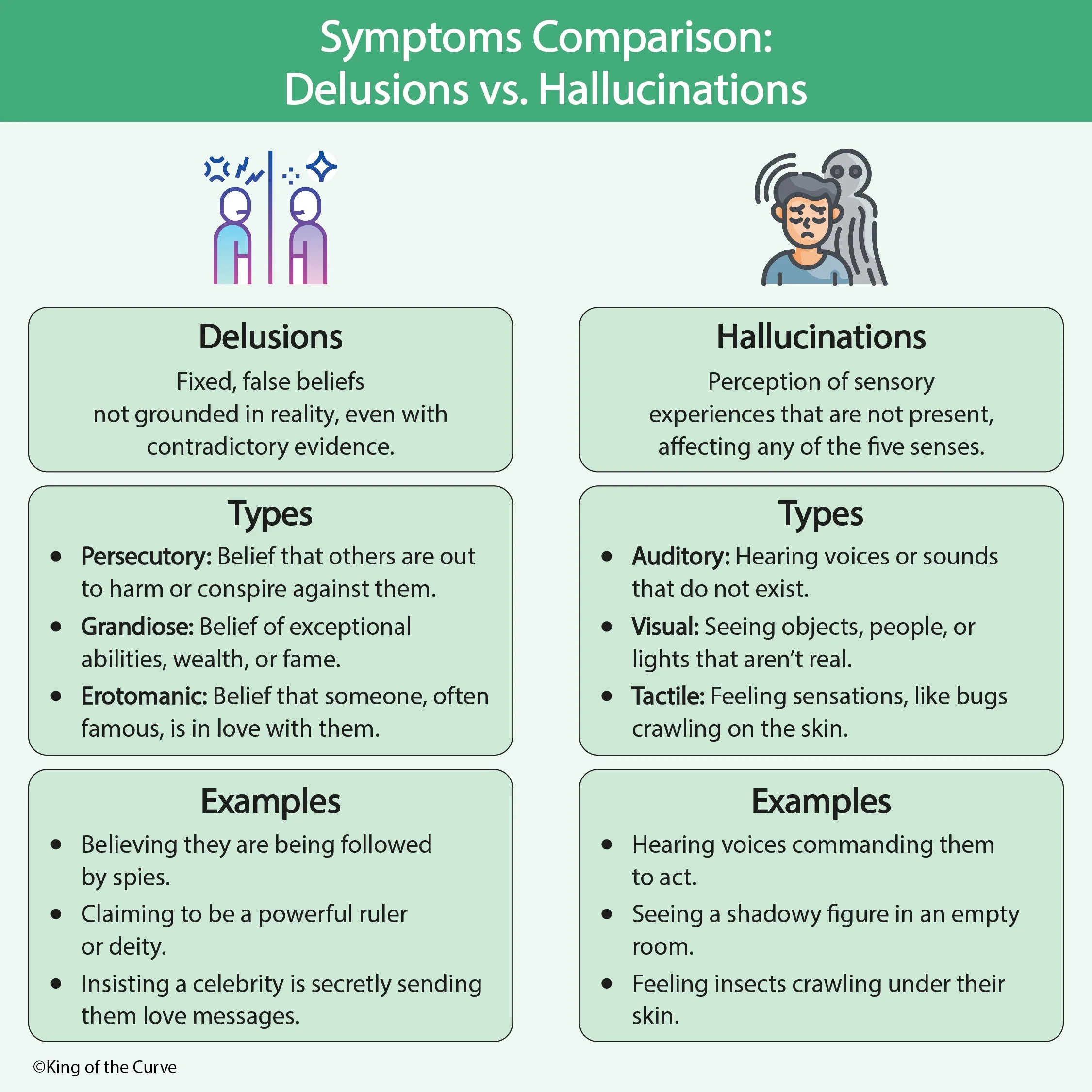Understanding the Differences Between Delusions and Hallucinations
Mental health conditions can present with a variety of symptoms, but two of the most misunderstood are delusions and hallucinations. While they may seem similar, they are distinct experiences that affect individuals in different ways. Understanding their differences is crucial for medical professionals, caregivers, and students preparing for exams like the MCAT.
What Are Delusions?
Delusions are fixed, false beliefs that are not grounded in reality, even when presented with contradictory evidence. Individuals experiencing delusions firmly believe in these false perceptions, despite logical explanations.
Types of Delusions
Persecutory Delusions – The belief that others are out to harm, spy on, or conspire against them.
Grandiose Delusions – The belief in possessing exceptional abilities, fame, wealth, or divine powers.
Erotomanic Delusions – The false belief that someone, often a celebrity, is in love with them.
Examples of Delusions:
Believing they are being followed by spies.
Claiming to be a powerful ruler or deity.
Insisting that a famous person is secretly communicating with them.
What Are Hallucinations?
Hallucinations are perceptions of sensory experiences that are not present in reality. Unlike delusions, which are false beliefs, hallucinations involve experiencing things that aren’t actually there through the five senses.
Types of Hallucinations
Auditory Hallucinations – Hearing voices or sounds that do not exist.
Visual Hallucinations – Seeing people, objects, or lights that aren’t real.
Tactile Hallucinations – Feeling physical sensations, such as bugs crawling on the skin.
Examples of Hallucinations:
Hearing voices giving commands.
Seeing shadowy figures in an empty room.
Feeling insects crawling under the skin.
| Feature | Delusions | Hallucinations |
|---|---|---|
| Definition | Fixed, false beliefs not based on reality, even when presented with contrary evidence. | Perceptions of sensory experiences that are not actually present. |
| Type of Disturbance | Cognitive (affects thought processes and beliefs) | Perceptual (affects sensory experiences) |
| Sensory Involvement | No sensory component; it is purely a belief. | Involves false sensory experiences (hearing, seeing, feeling, etc.). |
| Examples | Believing one is a famous figure or being persecuted by spies. | Hearing voices, seeing things that aren’t there, or feeling imaginary sensations. |
| Common in Disorders | Schizophrenia, Delusional Disorder, Bipolar Disorder (Manic episodes) | Schizophrenia, Psychotic Disorders, Severe Depression, Substance Abuse |
| Response to Evidence | Person strongly believes the delusion even when presented with clear evidence to the contrary. | Person may recognize the hallucination isn’t real once they gain insight or clarity. |
Why Understanding This Matters for MCAT Students
For MCAT students, understanding delusions and hallucinations is critical for excelling in the Psychological, Social, and Biological Foundations of Behavior section. Future medical professionals will interact with patients experiencing these symptoms, making clinical awareness, empathy, and knowledge essential skills.
Expand Your Knowledge with KOTC
At King of the Curve, we’re passionate about long-term learning, making results effortless and rewarding for over 100,000 downloads of our resources. Our unique features—like the Adaptive Q-Bank, stunning visuals, multiplayer modes, timed practice, and daily questions—help you master science concepts, including mental health, for exams like the MCAT. Check out our KOTC classroom, earn Curve Coins through gamification, and explore our custom homepage at mcat.kingofthecurve.org for more resources.
For a more comprehensive understanding, visit mcat.kingofthecurve.org. Access over 1000+ illustrations summarizing core concepts essential for MCAT success.
Frequently Asked Questions (FAQs)
-
Aim for 4-6 focused hours, ensuring you incorporate breaks to avoid burnout.
-
Practice mindfulness techniques, take practice exams under realistic conditions, and maintain a balanced lifestyle.
-
Set short-term goals, seek support from mentors, and reward yourself for small achievements.
-
Regular exercise improves focus, reduces stress, and enhances overall mental clarity.
-
KOTC offers personalized learning tools, gamification features, and adaptive question banks to help students stay on track without burnout.


